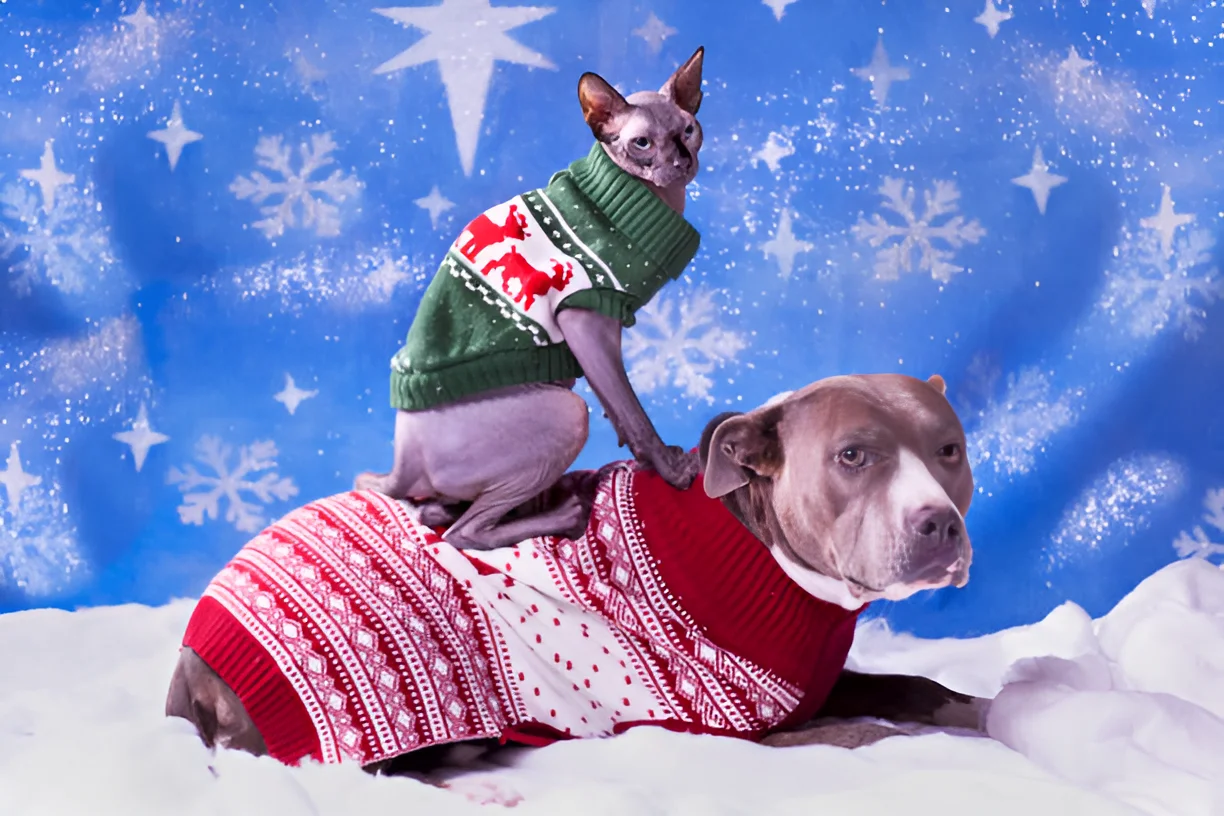Pit bulls may not get along with cats due to their strong prey drive, lack of socialization, and territorial instincts. Pit bulls, like many other dog breeds, have a complex relationship with cats. While some pit bulls can coexist peacefully with feline companions, others may exhibit aggressive or predatory behavior towards them. Understanding the reasons behind this behavior is crucial for pet owners who want to create a harmonious multi-pet household. In this comprehensive guide, we will explore the factors that influence a pit bull’s behavior towards cats, how to manage and improve their interactions, and tips for ensuring the safety and well-being of both pets.
Understanding Pit Bull Behavior
Pit bulls are a group of breeds that include the American Pit Bull Terrier, American Staffordshire Terrier, Staffordshire Bull Terrier, and others. These dogs are known for their strength, loyalty, and intelligence. However, their behavior towards cats can vary widely based on several factors:
- Prey Drive: Pit bulls have a strong prey drive, which is an instinctual inclination to chase and capture smaller animals. This drive can be triggered by the sight or movement of a cat.
- Socialization: Proper socialization is crucial for pit bulls to learn how to interact with other animals, including cats. Lack of socialization can lead to fear, aggression, or predatory behavior.
- Territorial Instincts: Pit bulls can be territorial, especially in their home environment. They may see a cat as an intruder and react defensively.
Factors Influencing Pit Bull and Cat Interactions
Several factors can influence how a pit bull interacts with cats. Understanding these factors can help pet owners manage and improve their pets’ relationships:
1. Early Socialization: Puppies that are exposed to cats and other animals at a young age are more likely to develop positive relationships with them. Early socialization helps pit bulls learn appropriate behaviors and reduces the likelihood of aggression.
2. Individual Temperament: Each pit bull has a unique temperament. Some may be naturally more tolerant and friendly towards cats, while others may be more aggressive or fearful.
3. Previous Experiences: A pit bull’s past experiences with cats can shape their behavior. Positive interactions can lead to a peaceful coexistence, while negative experiences can result in fear or aggression.
4. Training and Management: Consistent training and management are essential for teaching pit bulls how to behave around cats. Positive reinforcement techniques can help reinforce good behavior and discourage unwanted actions.
Tips for Introducing a Pit Bull to a Cat
Introducing a pit bull to a cat requires careful planning and patience. Here are some tips to ensure a smooth introduction:
1. Prepare Separate Spaces: Before the introduction, create separate spaces for your pit bull and cat. This allows each pet to have a safe area where they can retreat if they feel overwhelmed.
2. Use Barriers: Use baby gates or pet barriers to allow the pets to see and smell each other without direct contact. This helps them get used to each other’s presence in a controlled manner.
3. Supervised Meetings: Arrange short, supervised meetings between the pit bull and cat. Keep the dog on a leash and allow the cat to approach at their own pace. Reward both pets for calm behavior.
4. Positive Reinforcement: Use treats, praise, and affection to reward your pit bull for calm and friendly behavior around the cat. This helps create positive associations with the cat’s presence.
5. Gradual Increase in Interaction: Gradually increase the duration and frequency of interactions as both pets become more comfortable with each other. Continue to supervise their interactions until you are confident they can coexist peacefully.
Managing Prey Drive and Aggression
Managing a pit bull’s prey drive and aggression towards cats requires consistent training and vigilance. Here are some strategies to help manage these behaviors:
1. Training Commands: Teach your pit bull basic commands such as “sit,” “stay,” and “leave it.” These commands can help you control your dog’s behavior and redirect their attention away from the cat.
2. Exercise and Mental Stimulation: Provide your pit bull with plenty of physical exercise and mental stimulation to reduce excess energy and prevent boredom. A tired dog is less likely to exhibit aggressive or predatory behavior.
3. Desensitization: Gradually expose your pit bull to the cat in controlled settings to desensitize them to the cat’s presence. Start with short, calm interactions and gradually increase the duration as your dog becomes more comfortable.
4. Avoid Punishment: Avoid using punishment to correct aggressive behavior, as it can increase fear and anxiety. Instead, focus on positive reinforcement and reward-based training.
5. Professional Help: If your pit bull’s aggression towards cats is severe or unmanageable, seek help from a professional dog trainer or behaviorist. They can provide personalized guidance and training techniques.
Ensuring the Safety of Both Pets
The safety of both your pit bull and cat is paramount. Here are some tips to ensure their well-being:
1. Supervision: Always supervise interactions between your pit bull and cat, especially during the initial stages of their relationship. Never leave them alone together until you are confident they can coexist peacefully.
2. Safe Spaces: Provide safe spaces for both pets where they can retreat if they feel threatened or overwhelmed. This can include separate rooms, crates, or high perches for the cat.
3. Regular Health Check-Ups: Ensure both pets receive regular veterinary check-ups to monitor their health and address any potential issues. This includes vaccinations, parasite prevention, and routine exams.
4. Monitor Body Language: Pay attention to the body language of both pets. Signs of stress, fear, or aggression should be addressed immediately to prevent escalation.
5. Consistent Routine: Maintain a consistent routine for feeding, exercise, and playtime to provide stability and reduce stress for both pets.
Conclusion
While pit bulls may have a reputation for not getting along with cats, many factors influence their behavior. By understanding the reasons behind their actions and implementing proper training, socialization, and management techniques, it is possible for pit bulls and cats to coexist peacefully. Patience, consistency, and positive reinforcement are key to building a harmonious multi-pet household.
The photo featured below the post headline is Credit: Enzo Nguyen@Tercer Ojo Photography/istockphoto
I hope you find this post helpful and informative. If Yes’ feel free to share it with your friends!
Frequently Asked Questions
Why do pit bulls not like cats?
Pit bulls may not get along with cats due to their strong prey drive, lack of socialization, and territorial instincts.
Can pit bulls and cats live together peacefully?
Yes, with proper training, socialization, and management, pit bulls and cats can live together peacefully.
How can I introduce my pit bull to a cat?
Introduce them gradually using barriers, supervised meetings, and positive reinforcement. Ensure both pets have separate spaces to retreat to if needed.
What should I do if my pit bull shows aggression towards my cat?
Focus on training commands, provide exercise and mental stimulation, use desensitization techniques, and seek professional help if needed.
How can I ensure the safety of both my pit bull and cat?
Supervise their interactions, provide safe spaces, monitor their health, pay attention to body language, and maintain a consistent routine.

